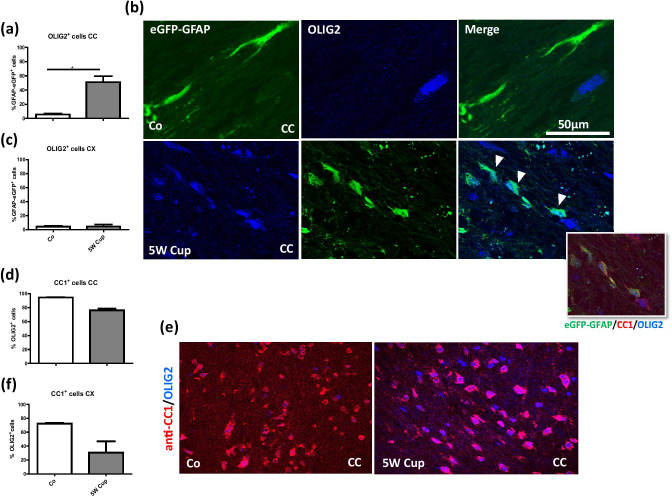Fig. 3.
Immunohistochemical analysis of anti-CC1 (red) and anti-OLIG2 (blue) in eGFP-GFAP (green) transgenic mice. (a, c) The quantification of eGFP-GFAP+ cells expressing OLIG2 or CC1 in the CC and CX, respectively. (b) Representative images of eGFP-GFAP brain sections in the corpus callosum (CC), processed for anti-CC1 and anti-OLIG2 staining in control and cuprizone-intoxicated mice. Arrowheads indicate the co-localization of eGFP-GFAP and OLIG2. (d), (f) The quantification of double positive anti-OLIG2+/anti-CC1+ cells in the CC and CX, respectively. e Representative images of anti-CC1 (red) and anti-OLIG2 (blue) in the midline of the CC. Note that all anti-CC1+ cells stained positive for anti-OLIG2. Four animals per group; two independent experiments were performed. Statistically significant differences are indicated by asterisks (*p < 0.05). Scale bar = 50 µm

